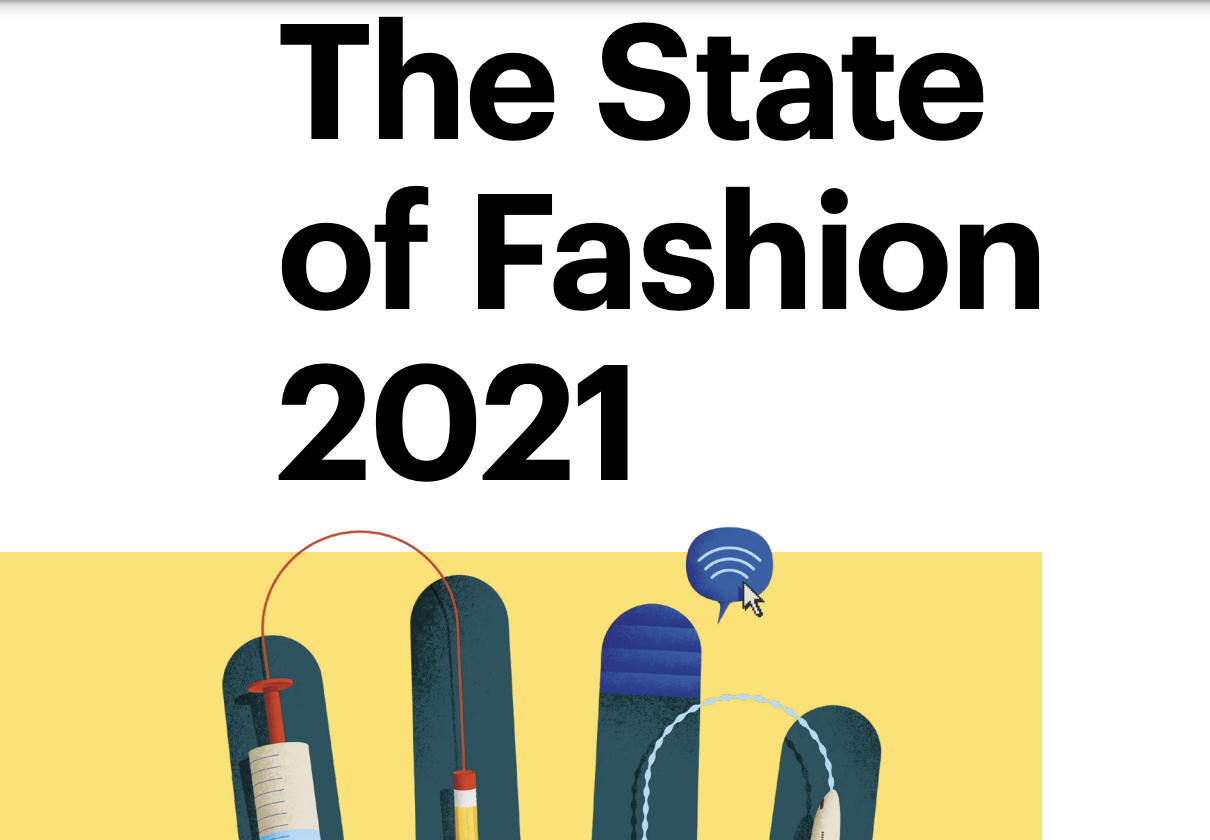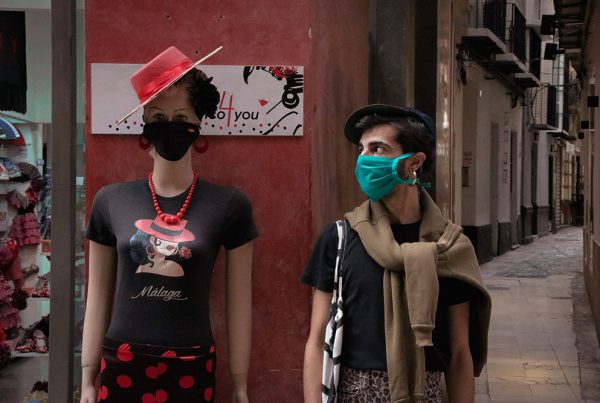Once again, this year, McKinsey have created an analysis and talked with the top executives of the fashion industry to identify the main themes and key drivers affecting our industry in 2021.
The ten themes have been gathered into three main categories: global economy, consumer shifts and the fashion system.
Let’s first look into the trends of the global economy key drivers.
Global Economy
Living with the virus
The Covid-19 crisis has impacted the lives and livelihoods of millions of people, while disrupting both international trade, travel, the economy and
consumer behaviour. This may force companies to rewire their operating models to enable flexibility and faster decision-making, and balance speed against discipline in the pursuit of innovation.
Diminished demand
Due to the Covid-19 recession, the global economy is expected to partially recover next year but economic growth will remain diminished relative to prepandemic levels. Since demand for fashion is also unlikely to bounce back due to restrained spending power amid unemployment and rising inequality, companies should seize new opportunities and double down on outperforming categories, channels and territories.
These two key drivers covered the first part of the main themes. Let’s have a further look at the next trend the consumer shifts.
Consumer Shifts
Digital sprint
Digital adoption spiked during the pandemic, with many brands finally going online and implementing digital tools like livestreaming, customer service video chat and social shopping. As the online trend will grow stronger, fashion players must optimise the online experience and channel mix while finding persuasive ways to integrate the human touch.
Seeking justice
With garment workers, sales assistants and other lower-paid workers operating at the sharp end of the crisis, consumers have become more aware of the plight of vulnerable employees in the fashion value chain. As momentum for change builds alongside campaigns to end exploitation, consumers will expect companies to offer more dignity, security and justice to workers throughout the global industry.
Travel interrupted
The travel retail sector remains severely disrupted and destination shopping suffered throughout 2020. Expectations to international tourism will continue to be low and shoppers experiencing further interruptions to travel, companies will need to utilize local consumers, make strategic investments in markets witnessing a stronger recovery and unlock new opportunities to keep customers shopping.
That’s it for the second trend. Lastly, let’s have a look into the remaining key driver the fashion system.
Fashion System
Less is more
After demonstrating that more products and collections do not necessarily yield better financial results, Covid-19 highlighted the need for a shift in the profitability mindset. Companies need to reduce complexity and find ways to increase full-price sell-through to reduce inventory levels by taking a
demand-focused approach to their assortment strategy, while boosting flexible in-season reactivity for both new products and replenishment.
Opportunistic investment
Performance variations in the fashion industry accelerated during the pandemic, hence widening the gap between the best-performing companies and the rest. With some players already bankrupt and others kept afloat by government subsidies, M&A activity are expected to increase as companies try to take market share, unlock new opportunities and expand capabilities.
Deeper partnership
By using the vulnerability of procurement partners, the weakness of contracts and the risks of a concentrated supplier footprint, the Covid-19 started many of the changes that companies were already making to rebalance their supply chain. To mitigate future ruptures, fashion players should move away from transactional relationships in favour of deeper partnerships that bring greater agility and accountability.
Retail ROI
Physical retail has been declining for years and the number of store closures will continue to scale in the post-pandemic period. Started by a potential power shift from landlords to retailers combined with the growing digital ease of use, companies will need to make tough choices to improve ROI at store level.
Work revolution
The new working methods during the pandemic and the need to drive performance in the years to come, a new model for work is likely to rise. Companies should therefore rethink their approach to remote and on-premise work, invest in re-skilling talent and create a greater sense of shared purpose and belonging for employees who continue to reconsider their own priorities.
We hope you find the ten themes interesting and might be inspired by them to implement in your own company.
If you want to read the full report you can find it here.


